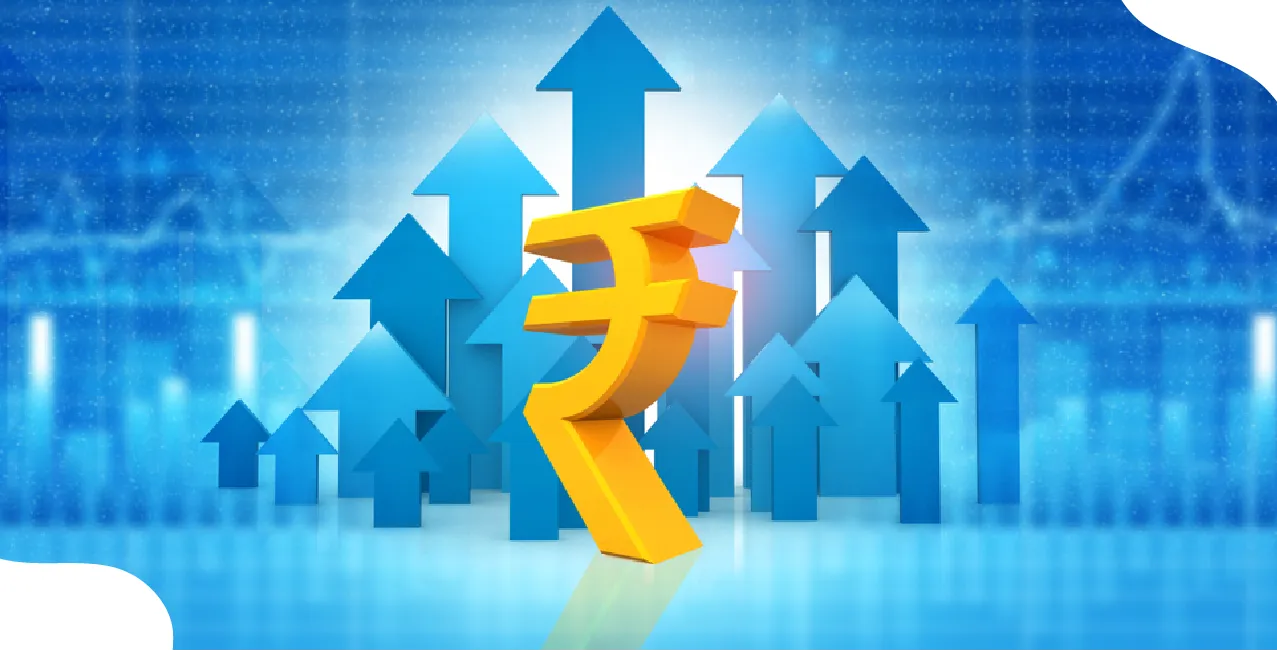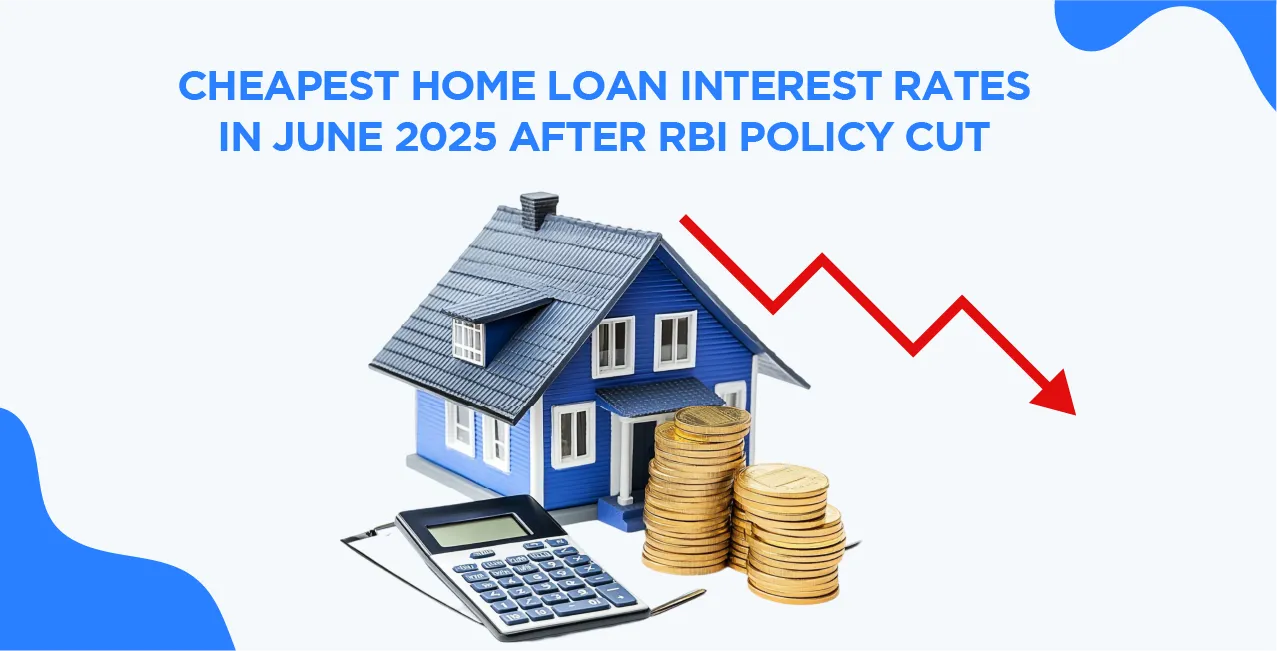
Author
LoansJagat Team
Read Time
4 Min
19 Aug 2025
Report: Trump’s Tariffs May Slow Corporate Loan Growth in Indian Banks
US President Donald Trump has shook the global trade environment, once again with aggressive tariff measures. Trump announced a base tariff of 25% on Indian exports and an additional 25% levy on products linked to Russian oil imports, effectively creating a 50% tariff wall for certain sectors.
This trade policy of import/export restrictions has sparked concerns among economists, corporates, and banks. The 50% tariff on Indian exports will possibly impact India’s economic momentum. The sectors most directly exposed include textiles, jewellery, apparel, seafood, machinery and mechanical appliances, auto components, and chemicals.
These are industries where India holds competitive advantages in global trade. However, now the Indian gods might face a backlash in their largest export market. Beyond this, the tariffs carry indirect risks for industries such as electronics, energy, and steel, which rely on global supply chains that are now being disrupted.
Moody’s Analytics has issued a stark warning that the escalation of US tariffs, especially if pushed to 50%, poses a serious threat to India’s competitiveness, trade balance, and growth trajectory. The bigger worry is not just the direct hit to exporters but also the slower investment activity and weakened corporate credit demand that could ripple across the banking sector.
Effect of Trump’s 50% Tariffs on Indian Loan Growth
According to Moody’s Analytics, India ranks among the most exposed nations to these tariff-driven pressures. Large domestic lenders such as the State Bank of India (SBI), HDFC Bank, and ICICI Bank have exposure of around 10% to the most affected industries.
At first glance, a 10% exposure seems manageable. However, when seen through the lens of systemic credit expansion, the tariffs could become a drag.
The likely slowdown in corporate loan growth is expected to emerge through three channels:
- Banks might be less willing to discurse loans, particularly towards exporters in tariff-affected industries.
- Exporters will delay capital expenditure and expansion plans due to uncertain global demand. This might be a replica of what happened during COVID-19 pandemic.
- Sluggish GDP growth reduces aggregate credit demand across the system.
Thus, even if the absolute exposure is limited, the indirect effect of tariffs may discourage both lenders and borrowers, leading to muted loan growth in the months ahead.
Read More – The Role of Government Policies in Shaping Financial Markets
Tariff-Driven Pressure on GDP Growth
The broader economic impact cannot be ignored. Moody’s Ratings (a separate entity from Moody’s Analytics) has noted that raising tariffs on Indian goods to 50% could knock off approximately 0.3 percentage points from India’s GDP growth in FY 2025-26.
This forecast highlights how external trade shocks can weaken overall growth, even in an economy that is heavily driven by domestic consumption.
Manufacturing sectors such as electronics, machinery, and chemicals are considered particularly vulnerable. The reason is twofold: first, these are already capital-intensive industries requiring long-term planning; second, they are deeply integrated with global supply chains.
Tariff barriers not only reduce exports but also raise import costs for components.
Another pressure point stems from energy security. The tariffs have introduced additional costs for countries like India that import Russian oil.
A forced shift away from these relatively cheaper imports could increase fuel costs, raise inflationary pressures, and strain the current account balance.
Earlier projections from Moody’s Analytics had already trimmed India’s GDP growth forecast to 6.4% in 2025 and 2026, compared with 6.6% in 2024. Tariffs make this slowdown more pronounced, suggesting a sustained period of moderated growth momentum.
How Will Trump’s 50% Tariffs Affect Corporate Loan Lending?
While banks’ direct lending exposure to the tariff-hit sectors is capped at roughly 10%, the indirect effects are far more concerning.
- Reluctance to lend: Exporters highly dependent on US markets could report less revenues in the near future. Therefore, banks will become unsure of fresh exposure.
- Paused expansion plans: Corporations may defer expansion and capital expenditure, reducing demand for term loans.
- Broader economic drag: GDP growth moderation of 20–30 basis points translates into lower credit demand across both corporates and retail borrowers.
Together, these dynamics create a self-reinforcing cycle: tariffs reduce exports, businesses hold back investment, banks adopt caution, and the economy sees slower loan growth.
Corporate Loan Credit Demand Low Even Before Tariffs
The tariff shock comes at a time when corporate credit demand was already slow. As per the Reserve Bank of India (RBI), by end-June 2025, bank loans to industries stood at ₹39.3 trillion, reflecting a 5.5% year-on-year growth, much lower than 8.1% in the previous year.
Loans to industries accounted for 21.4% of non-food credit, down from 22.1% a year earlier, signalling a shrinking share of corporate lending in banks’ overall portfolios. Businesses, instead of borrowing, have preferred to use internal accruals to fund their operations. At the same time, new project announcements fell by 5% in FY25, after already having declined by 3% in FY24.
This backdrop reveals that corporate loan growth was already constrained due to weak investment sentiment. The additional uncertainty created by tariffs will likely exacerbate this slowdown.
Lending Difficulties in a Tariff-Hit Sector
Consider a medium-sized garment brand with heavy dependence on the US for sales. A 50% tariff immediately raises the landed cost of its goods in the US, making them uncompetitive against rivals from Vietnam or Bangladesh.
The exporter faces declining orders, reduced profit margins, and increasing working capital stress. Even if the company seeks additional financing for liquidity, banks are likely to hesitate.
The repayment capacity of such a borrower is clouded by trade uncertainty, making the loan a risky proposition.
This example illustrates why banks may tighten credit standards, not only for directly exposed exporters but also for suppliers and ancillary industries tied to them.
Key Impacts of Trump’s 50% Tariffs on India
The table shows how multiple channels, exports, energy, growth, and loans interact to amplify banking risks in a tariff-heavy environment.
Also Read - Ex-RBI Governor Raghuram Rajan's ‘Wake-Up Call’ Warning For India As He Reacts To Donald Trump Tariffs
Corporate Response to Trump’s 50% Tariffs
Indian corporates are not blind to these risks. Several conglomerates, including Reliance Industries and JSW Steel, have highlighted in their annual reports that tariff-related uncertainty is undermining demand visibility and investor confidence.
At the same time, banks remain cautiously optimistic.
- SBI’s chairman anticipates that corporate loan demand could revive by around 10% in the December quarter, once trade dynamics stabilise.
- HDFC Bank’s CEO admitted to weak private capex trends but assured that the bank will maintain lending support across retail, MSME, and corporate segments.
- ICRA noted that while banks are willing to lend, the muted demand from exporters and tariff-linked industries could keep growth subdued in the near term.
Conclusion
Trump’s tariff policy represents more than just a trade dispute; it is an external shock with domestic banking implications. Indian banks may not be heavily exposed to tariff-hit sectors in absolute terms, but the broader slowdown in GDP growth, investment activity, and credit appetite could weigh heavily on corporate loan expansion.
For India, the challenge lies in ensuring that its export industries remain competitive while simultaneously upholding the domestic drivers of growth. Banks, meanwhile, must strike a delicate balance between ‘Careful’ and support, ensuring that cautious risk management does not translate into a complete credit freeze.
The coming quarters will reveal whether India’s domestic demand resilience can offset the external drag of tariffs, but the message is clear: global trade headwinds will test both India’s growth ambitions and its banking sector’s ability to lend confidently.
About the Author

LoansJagat Team
‘Simplify Finance for Everyone.’ This is the common goal of our team, as we try to explain any topic with relatable examples. From personal to business finance, managing EMIs to becoming debt-free, we do extensive research on each and every parameter, so you don’t have to. Scroll up and have a look at what 15+ years of experience in the BFSI sector looks like.

Quick Apply Loan
Subscribe Now
Related Blog Post

LoansJagat Team • 10 Jun 2025

LoansJagat Team • 06 Jun 2025

LoansJagat Team • 22 Sep 2025